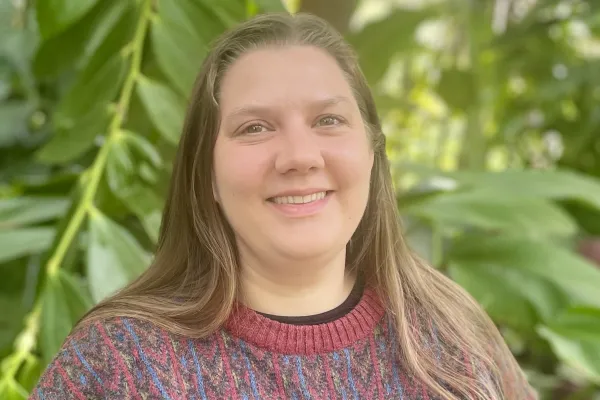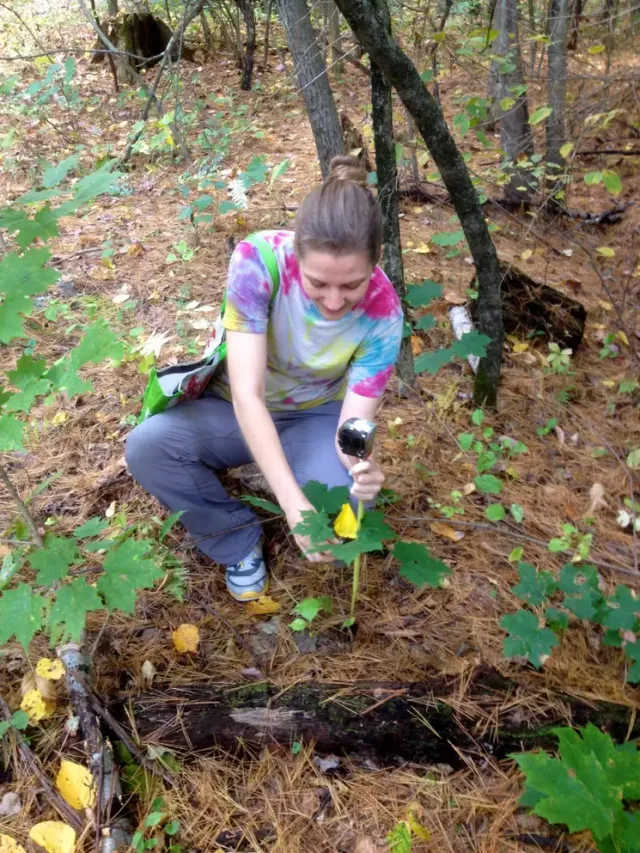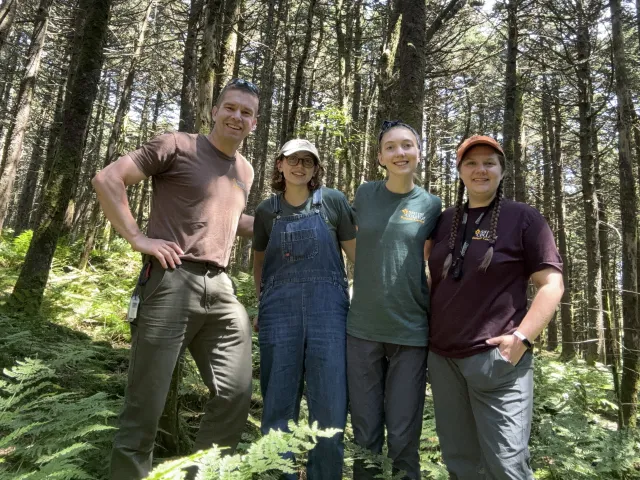Introducing the New Manager of Living Collections
News
Kady Wilson ’15, S.M. ’21: New to this Role, but Already Deeply Rooted to Smith College

Published August 22, 2024
Kady Wilson ’15, S.M. ’21 knows this truism better than most: In today’s world, botanic gardens aim to accomplish many goals–to serve as vehicles for conservation work, to function as spaces that connect people to the natural world, and to create educational environments accessible to all. As an accomplished scholar, she has long understood that the foundation of all this work lies in a well-documented plant collection with carefully managed records on each individual plant. These records tell of everything from the plant’s history at an institution to genetic information that can inform conservation priorities. As the botanic garden’s new Manager of Living Collections, taking over for Elaine Chittenden who retired in March, Wilson brings to Smith not only a depth of knowledge in the field, but also a surprising connection to the college.
While Wilson is new to this role, she is very familiar with this place. As a Smith alum, a botanic garden intern veteran and a two-time graduate from the Department of Biological Sciences, Wilson has spent a lot of time on this campus. And that deep-rooted history doesn’t end there. Wilson comes from a long line of Smithies: her aunt, Ellen Cummin ’78, her grandmother Katharine Dana ‘Kady’ Hewitt ‘1939, and her great grandmother Henrietta Silliman Dana ‘1912 are also Smith alums. (Fun sidenote: her aunt and her great grandmother both spent time working or studying in Lyman.) In fact, it is this long family history with the college that helped Wilson decide on Smith as her undergraduate choice.
“When I visited Smith as a junior in high school, I went to the archive, and I found photos of my grandmother Katharine Dana ‘Kady’ Hewitt. There were lots of pictures of her in the yearbook, as she was a very active student. I also found photos of my great grandmother, Henrietta Silliman Dana, who majored in botany and German. There was a file that contained a photo of her and a handwritten letter telling about a tour of the grounds she had given to the new president. I had never seen pictures of her before this. After seeing those archives, I felt a real connection to Smith.”

When Wilson first moved to Northampton from rural Vermont, she felt disconnected from the landscape. That’s what inspired her to take courses related to plants and the natural world, such as Gaby Immerman’s horticultural class at the botanic garden, setting her on a path in the plant world and to her major in biology with Prof Jesse Bellemare as her advisor. Wilson also spent a summer at the botanic garden as an intern were she learned how to prune shrubs with John Berryhill, how to collect seed with former Manager of Living Collections Elaine Chittenden and how to use ArcGIS mapping for her intern project of reimagining the Systematics Garden. All of these skills she would bring with her on her plant career journey, including her first stop at an internship at the Smithsonian where she worked in the botany department, gaining lab experience.
Wilson then continued to develop her professional skills from a flurry of experiences including: interning at the Arnold Arboretum, spending time in a botany lab in Minnesota for a winter, taking a 9-month stint at Polly Hill Arboretum as a curatorial intern, heading to The Jerusalem Botanical Gardens as a curatorial scholar, moving on to do research at the Palestine Museum of Natural History where she reorganized their herbarium. Then Wilson came back to Smith to work on her masters with Prof Bellemare, and defended her thesis in 2021 on “Patterns of Endemism in Eastern Temperate Deciduous Forest Plants,” before moving on to Dawes Arboretum to serve as their Plant Collections Manager.

“I knew from when I had first heard about botanic garden curation that it was what I wanted to do,” shared Wilson. “I like the record keeping part of the role, my brain works that way.”
“And I like the idea of working in plant conservation and ex situ conservation,” continued Wilson. “Botanic gardens are good for that because they are record keeping, they can keep track of where plants came from. Even though they were not originally created for that, they are perfectly set up for it.”
“I’m really excited about getting involved in the conservation work that the Botanic Garden of Smith College is engaged in, and making sure we are doing good by these plants that we are protecting. And to know that we are training Smith students to do this kind of work because it’s important for the world to be looking at plants in this way, and to be keeping track of them.”